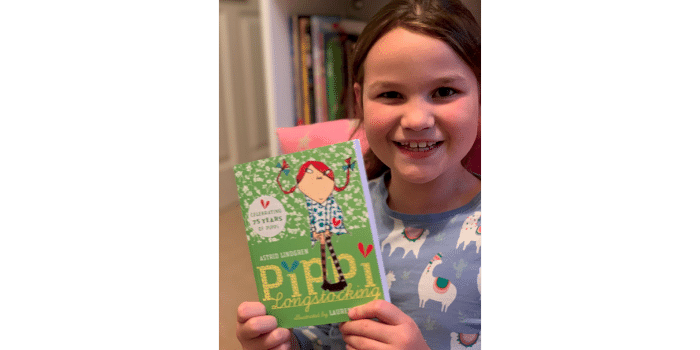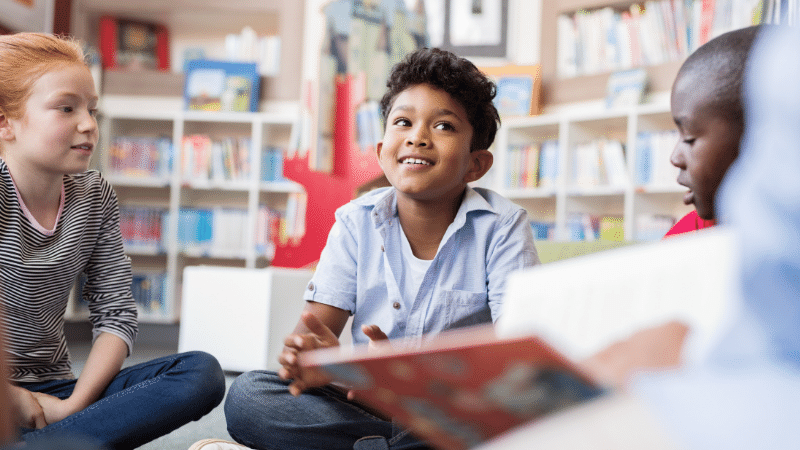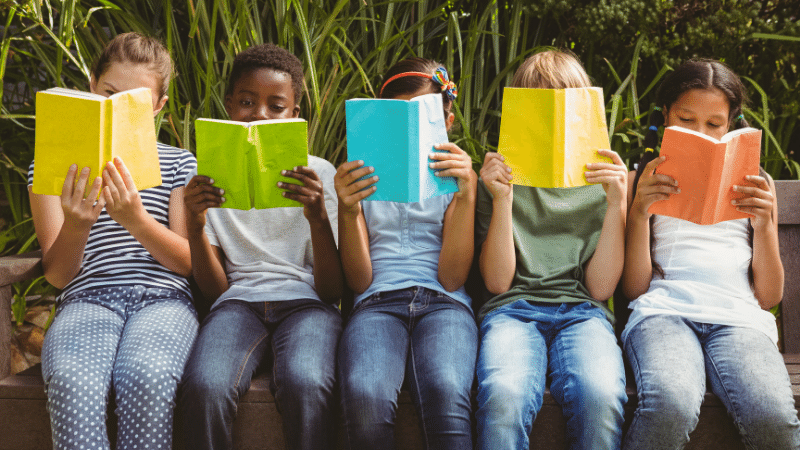Let’s celebrate #WorldKidLitMonth!
Time to whip out your party shoes as September is a big month in the translation community, hosting not merely International Translation Day and the European Day of Languages but also #WorldKidLitMonth!
As a team of passionate linguists, we wanted to honour #WorldKidLitMonth by sharing some of our favourite translated children’s stories. Whilst some are age-old classics, some are more recent publications that you may not have heard of. Have a look below; maybe there are a few you didn’t even know were translations!
Pippi Longstocking by Astrid Lindgren
This is a Swedish story originally published in 1945 as Pippi Langstrump. Although many translations now exist, it was first translated into English in 1954 by Edna Hurup and illustrated by Richard Kennedy.
Why should you read it?
The collection of three books centre upon the strongest girl in the world. She lives on the outskirts of a small Swedish town and shares her house with a monkey and a horse. Pippi is eccentric, tells lies and subverts the adult world in an utterly marvellous fashion. She is quite frankly a girl that all children should meet.
When is the best age to read it?
Between the ages of 5 and 9 (but to be honest, you’re never too old for a good adventure!)

The Rainbow Fish by Marcus Pfister
This international best-seller is a German story originally published in 1992 as Der Regenbogenfisch. It was translated into English by J. Alison James and soon became a modern classic, even being adapted into an animated television series.
Why should you read it?
Rainbow Fish teaches about the importance of sharing. Possessing scales that shimmer like the colours of the rainbow, Rainbow Fish is the most beautiful fish in the ocean. When asked to share his scales, however, Rainbow Fish refuses and keeps his scales to himself, ultimately making him very lonely. Although a simple message, it is one that is universal: sharing makes us happy.
When is the best age to read it?
Between 3 and 6 years.

The Little Prince by Antoine de Saint-Exupéry
This is a French story published in 1943 as Le Petit Prince. It is one of the most translated books in the world. Although it was first translated into English by Katherine Woods in 1943, many now read Richard Howard’s translation, a version that is perhaps less poetic but easier to read.
Why should you read it?
The Little Prince tells the story of a pilot who is stranded in the desert and on the edge of survival. He meets a young prince who has travelled from his home on a distant asteroid. As the only occupant on the asteroid, the little prince is neither a boy nor a man, yet he educates the pilot in extraordinary ways. It’s a timeless tale of childhood, imagination and the inevitability of growing up, and it is truly beautiful. How can you not fall in love with quotations like this…?
“And now here is my secret, a very simple secret: it is only with the heart that one can see rightly, what is essential is invisible to the eye.”
When is the best age to read it?
From the age of 6 and up.
The Day Saida Arrived by Susana Gómez Redondo
This is a contemporary Spanish story published in 2015 as El Día que Saída Llegó. It was translated by Lawrence Schimel in 2020 and it centres upon the friendship between two little girls: the first a Moroccan child who has recently migrated to Spain and the second a Spanish girl who searches for the words to help her friend feel welcome in her new home. Although they do not speak the same language, they forge a strong bond and learn about the wonders of the world around them.
Why should you read it?
It is a heart-warming story that offers an accessible introduction to talking about immigration. Not merely does it offer engaging and vivid illustrations crafted by Sonja Wimmer, but it includes English translations and pronunciations to Arabic words as well as an Arabic alphabet. The short yet beautiful story shows how bonds can be built beyond borders and the barriers imposed by language. It is a story of unity, love and acceptance, and it is a tale every child should hear.
When is the best age to read it?
Between 3 and 8 years.

Pinocchio by Carlo Collodi
Everyone has heard of Pinocchio, right? But did you know that, before it was a Disney animation, it was an Italian novel for children called Le avventure di Pinocchio. It was published in 1883, and inspired by a series called La storia di un burattino which appeared in an Italian weekly magazine for children called Giornale per i bambini. Nearly ten years after its publication, and two years after Collodi’s death, Pinocchio was first translated into English by Mary Alice Murray in 1892.
Why should you read it?
Although the novel is quite gruesome compared to Walt Disney’s adaptation, it remains a classic and, not including religious texts, it is one of the most translated books in the world. Telling the tale of a poor man named Geppetto who receives a piece of enchanted wood to carve himself a marionette, Pinocchio imparts some important traditional morals: disobedience does not pay off, you should not tell lies and those who care for their parents will be rewarded.
When is the best age to read it?
From the age of 7 and up.
These are just some of our favourites, but we’d love to know what your favourite translated stories are! Please get in touch via Twitter or our Contact Page to share your top reads and keep this discussion going. Also, be sure to stay up to date with all things #WorldKidLit by checking out their website.
Let’s get talking about #WorldKidLitMonth!




